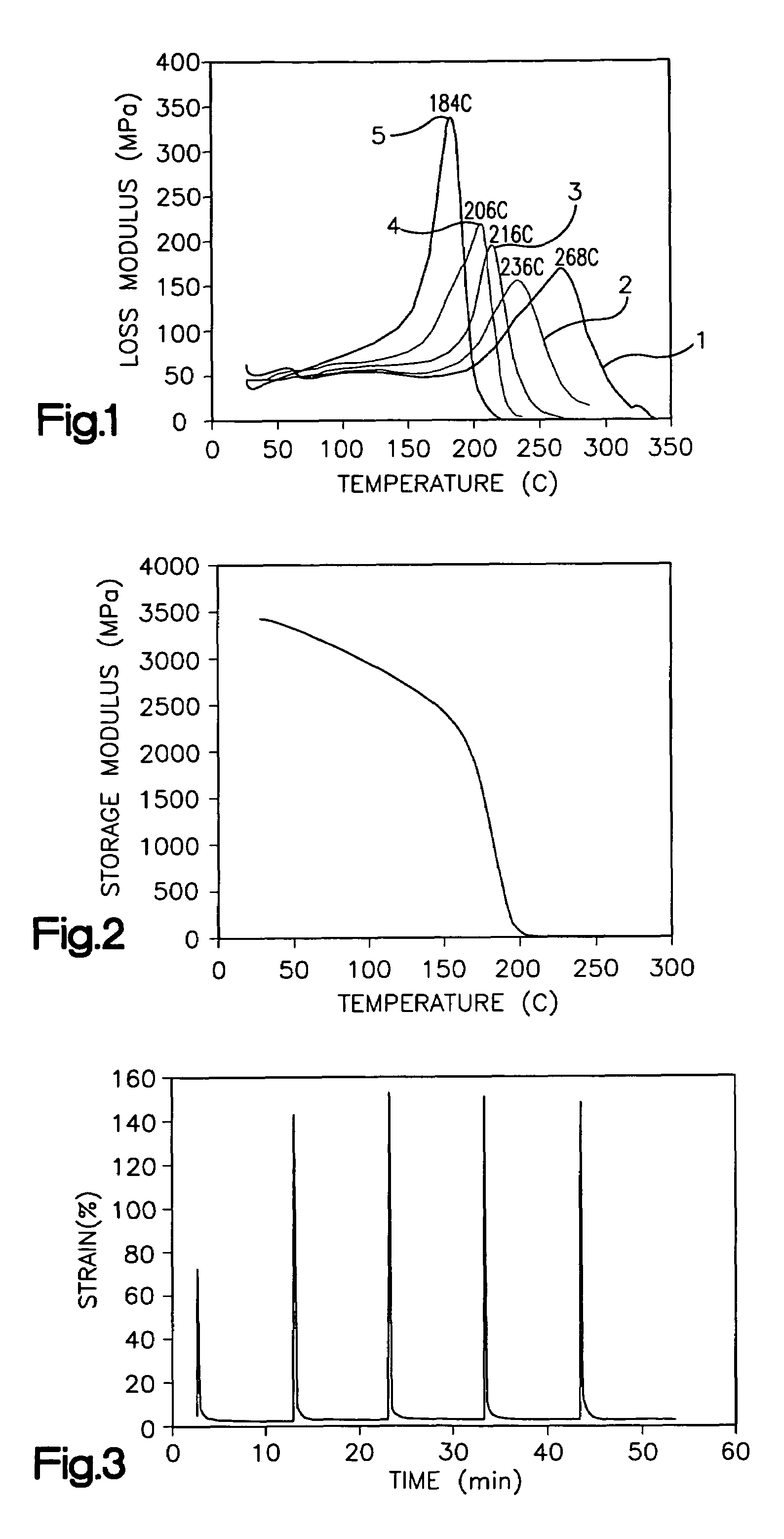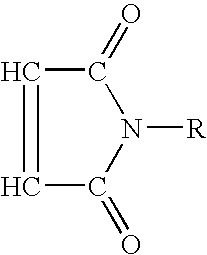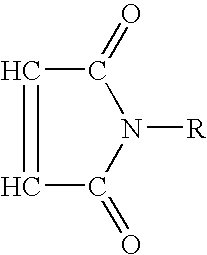Maleimide based high temperature shape memory polymers
- Summary
- Abstract
- Description
- Claims
- Application Information
AI Technical Summary
Benefits of technology
Problems solved by technology
Method used
Image
Examples
example 1
[0036]A formulation was made with 97 wt % of N-phenylmaleimide, 1 wt % of bismaleimide and 2 wt % of dicumyl peroxide. A mixture with a composition described above was polymerized by heating at 110° C. in an oven for 24 hours to obtain the cured shape memory polymer. The cured shape memory polymer was further postcured at 100° C., 120° C., 150° C. in vacuum for 2 hours each and finally at 177° C. for 4 hours, also in vacuum, to obtain a shape memory polymer with Tg of 268° C.
[0037]At the conclusion of this polymerization reaction a clear sheet of a cured shape memory polymer was obtained.
example 2
[0038]A formulation was made with 67 wt % of N-phenylmaleimide, 1 wt % of bismaleimide, 2 wt % of dicumyl peroxide, and 30 wt % of styrene monomer. A mixture with a composition described above was polymerized by heating at 100° C. in an oven for 24 hours to obtain the shape memory polymer. The cured shape memory polymer was further postcured at 100° C., 120° C., 150° C. in vacuum for 2 hours each and finally at 177° C. for 4 hours, also in vacuum, to obtain shape memory polymer with Tg of 184° C.
[0039]At the conclusion of this polymerization reaction a clear sheet of a cured shape memory polymer was obtained.
example 3
[0040]A formulation and procedure similar to that of Example 2 were used except that the styrene component was reduced to 5 wt % with a commensurate increase in the presence of N-phenylmaleimide to 92 wt %.
PUM
| Property | Measurement | Unit |
|---|---|---|
| Temperature | aaaaa | aaaaa |
| Temperature | aaaaa | aaaaa |
| Temperature | aaaaa | aaaaa |
Abstract
Description
Claims
Application Information
 Login to View More
Login to View More - R&D
- Intellectual Property
- Life Sciences
- Materials
- Tech Scout
- Unparalleled Data Quality
- Higher Quality Content
- 60% Fewer Hallucinations
Browse by: Latest US Patents, China's latest patents, Technical Efficacy Thesaurus, Application Domain, Technology Topic, Popular Technical Reports.
© 2025 PatSnap. All rights reserved.Legal|Privacy policy|Modern Slavery Act Transparency Statement|Sitemap|About US| Contact US: help@patsnap.com



